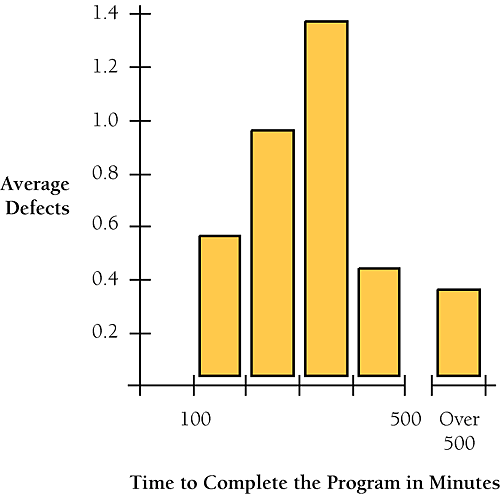There's no such thing as a free lunch, and even if there were, there's no guarantee that it would be any good. Software development is a far cry from haute cuisine, however, and software quality is unusual in a significant way. The General Principle of Software Quality is that improving quality reduces development costs.
Understanding this principle depends on understanding a key observation: the best way to improve productivity and quality is to reduce the time spent reworking code, whether the rework arises from changes in requirements, changes in design, or debugging. The industry-average productivity for a software product is about 10 to 50 of lines of delivered code per person per day (including all noncoding overhead). It takes only a matter of minutes to type in 10 to 50 lines of code, so how is the rest of the day spent?
Part of the reason for these seemingly low productivity figures is that industry average numbers like these factor nonprogrammer time into the lines-of-code-per-day figure. Tester time, project manager time, and administrative support time are all included. Noncoding activities, such as requirements development and architecture work, are also typically factored into those lines-of-code-per-day figures. But none of that is what takes up so much time.
Cross-Reference
For details on the difference between writing an individual program and writing a software product, see "Programs, Products, Systems, and System Products" in Effect of Project Size on Development Activities.
The single biggest activity on most projects is debugging and correcting code that doesn't work properly. Debugging and associated refactoring and other rework consume about 50 percent of the time on a traditional, naive software-development cycle. (See Importance of Prerequisites, for more details.) Reducing debugging by preventing errors improves productivity. Therefore, the most obvious method of shortening a development schedule is to improve the quality of the product and decrease the amount of time spent debugging and reworking the software.
This analysis is confirmed by field data. In a review of 50 development projects involving over 400 work-years of effort and almost 3 million lines of code, a study at NASA's Software Engineering Laboratory found that increased quality assurance was associated with decreased error rate but did not increase overall development cost (Card 1987).
A study at IBM produced similar findings:
Software projects with the lowest levels of defects had the shortest development schedules and the highest development productivity…. software defect removal is actually the most expensive and time-consuming form of work for software (Jones 2000).
The same effect holds true at the small end of the scale. In a 1985 study, 166 professional programmers wrote programs from the same specification. The resulting programs averaged 220 lines of code and a little under five hours to write. The fascinating result was that programmers who took the median time to complete their programs produced programs with the greatest number of errors. The programmers who took more or less than the median time produced programs with significantly fewer errors (DeMarco and Lister 1985). Figure 20-2 graphs the results.
Figure 20-2. Neither the fastest nor the slowest development approach produces the software with the most defects
The two slowest groups took about five times as long to achieve roughly the same defect rate as the fastest group. It's not necessarily the case that writing software without defects takes more time than writing software with defects. As the graph shows, it can take less.
Admittedly, on certain kinds of projects, quality assurance costs money. If you're writing code for the space shuttle or for a medical life-support system, the degree of reliability required makes the project more expensive.
Compared to the traditional code-test-debug cycle, an enlightened software-quality program saves money. It redistributes resources away from debugging and refactoring into upstream quality-assurance activities. Upstream activities have more leverage on product quality than downstream activities, so the time you invest upstream saves more time downstream. The net effect is fewer defects, shorter development time, and lower costs. You'll see several more examples of the General Principle of Software Quality in the next three chapters.



